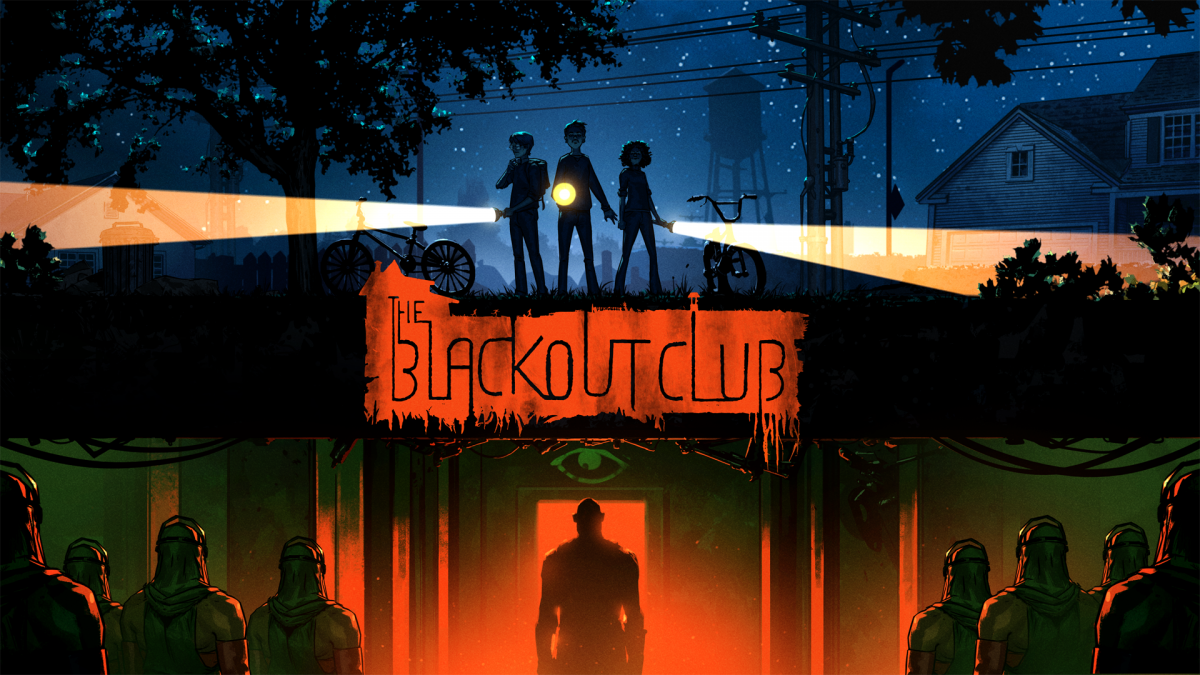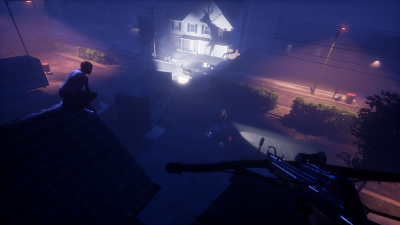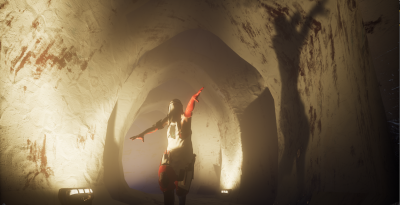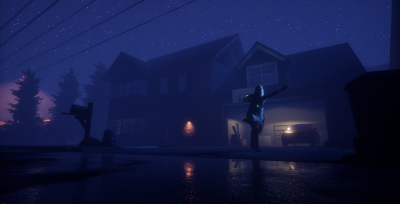Question Games stuffs Stephen King, Lovecraft, and It Follows into an original and anxiety-inducing game.
What do you get when you combine the philosophy of Stephen King novels, the horrific mysteries of Lovecraftian lore, the unsettling hopelessness of It Follows, and the nostalgia of the Goonies? Question Games’ co-op survival horror game the Blackout Club, obviously.
We were lucky enough to get our hands on both the single-player introduction and a brief co-op mission at PAX West.
The Blackout Club takes place in a small, seemingly safe, suburban town with a very strange and inexplicable event occurring: a group of teenagers keep losing consciousness and waking with no memory of what occurred. When one of their friends disappears and their cries are ignored by the adults, they begin an investigation of their own that leads to a series of dangerous adventures, ultimately uncovering what is happening in their outwardly peaceful hometown.
The single-player introduction to the Blackout Club is how the player adjusts to the game and its elements of play—a necessary start, as this is unlike any game I have ever played. “This is basically what you’ll see when you first start the game,” says developer Jordan Thomas as I pick up the controller, warning him of my squeamishness in horror. In this demo I am playing as one of the teenage girls in first-person, waking up in a large bedroom. As I walk around the house and begin to explore, the first thing I notice is the lighting—which stunningly plays around with the reflection of sun and shadows. It is beautiful and eerie and easy to see the influence from its BioShock roots. The game walks me through some basic controls, with quest objectives appearing in the top right of the screen. “Close your eyes,” it tells me, and as I do the flesh colored back of an eyelid covers the screen and highlights a cryptic text. I turn corners and look at pictures with my eyes closed. More cryptic text. More of me wondering how this creepy mechanic will serve me. I waver slowly through the house, but it’s still daylight… which means that there is nothing to fear—right? As I follow the last objective to the TV and begin to watch it, my character blacks out and wakes up in her room again… only this time, the daylight is gone.
With only the light of my phone to see, I begin to look around the room—my heart racing—I had no idea what to do or where to go. And then… the screen flashed red on one side. A noise from downstairs. Something was in the house. Some expletives leave my mouth as I ran into the bathroom across the hall. As I close my character’s eyes I see something through the walls. A shape. Its red humanoid outline walking ever-so-slowly up the stairs. My heart stops. “Can it open doors?” I ask Thomas. “Yes,” he smiles in a menacing satisfaction. I still don’t know what it is. What it wants. Why it moves the way it does. Why I can only see it with my eyes closed. And it’s the not knowing that scares me.
I hesitate and then run to the bedroom with my eyes open, forgetting that I can only see the Shape with my eyes closed. I jump on the bed and turn around, close my eyes, and there it stands—walking ceaselessly toward me through the doorway. I lead it to the bed and then sprint around it down the hall, turning off my phone’s light as to not draw any more unneeded attention. Breathing heavily in real life. Periodically I close my eyes to see where the Shape is, always inching closer. I follow some black footsteps in the dark, crawl into a hole, and escape. My sweaty palms gripping the controller and body pumping with adrenaline. This is procedural horror at its finest.
As the introduction to the game ends, we began the multiplayer aspect of the demo, which acts as the main part of the game and sets the player alongside three others, all attempting to uncover parts of the mystery in procedurally designed levels while avoiding the Shape. Now the town is covered with sleepwalkers, apparent agents that serve the Shape’s unknown mission. If they catch you, they will hold you down until the Shape arrives to convert you into a walker. Your friends in the mission can free you from the walkers, distract the Shape, and even wake you from sleepwalking; but, If the Shape turns you into a walker twice, it loses its slightly benevolent spirits and simply ends your life. The game is lost when all players become walkers or die…. But a win occurs if a single player can achieve the objective. Prior to starting the game, players can choose major and minor abilities that they can level up through experience points including improved stamina for sprinting or even prank calling the walkers to distract them, ultimately allowing each player to serve a unique role. As the level begins, the Shape is not yet present on the map, but as “sins” are completed, or if enough time passes by, it will introduce itself. The Shape selects it target by pursuing whatever character has committed the most sins (e.g., knocking down doors or flicking off cameras)—and it will pursue that target relentlessly. In a play-off of empathy, teammates can assist by trying to distract the Shape or even sacrifice themselves by building up more sin than the target player.
The cooperative form of this game combined with its procedural nature means that there are countless ways to play, win, lose, and be genuinely terrified with your friends. And if there is a moment when the player is too scared to pick up the controller, they will be enticed back into the world by the exploration of the narrative—what is happening in this town? What is the Shape and why does it follow sin? Why do these people serve the Shape? Why are they building a giant instrument underground? This is where Lovecraft, King, and It Follows come in. A story of kids and monsters. A mystery of science fiction. A monster that simply walks in relentless pursuit. Overall, the Blackout Club succeeds fantastically in combining elements of fiction, psychological horror, and gameplay into something that most gamers have never experienced.
The Blackout Club will be out in early 2019 on Xbox One, PS4, and PC.






No Comments